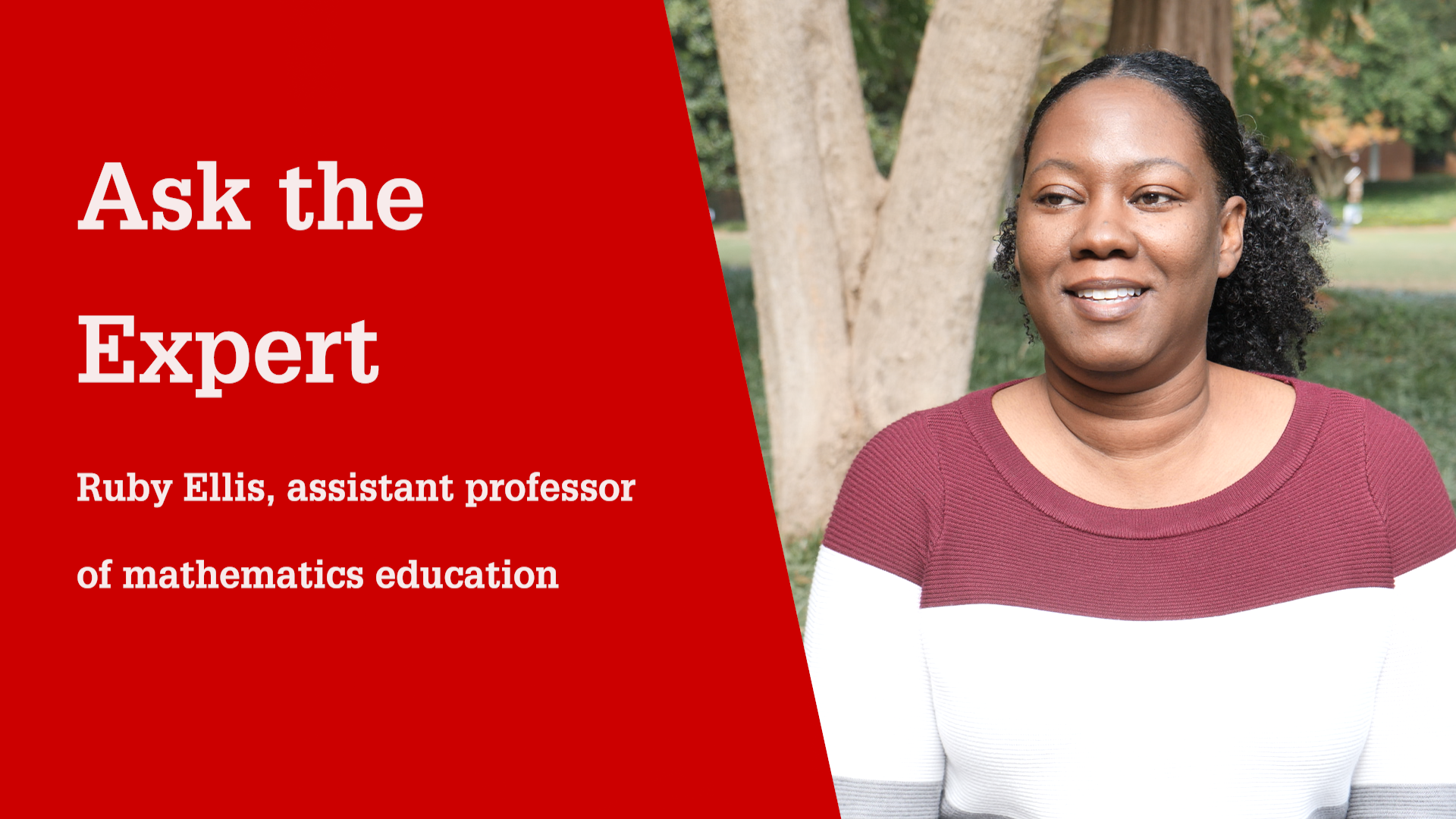How Can I Get Comfortable With Integrating Technology in My Classroom? ‘Practice the Tool Before You Have the Students Use It. Go Through the Tasks and Assess the Purpose for Why You’re Using the Tool,’ Says Assistant Professor Ruby Ellis
This is part of the monthly “Ask the Expert” series in which NC State College of Education faculty answer some of the most commonly asked questions about education.
Technological tools often let students investigate mathematical concepts more deeply, but many teachers struggle to find the time or support to implement these technologies in the classroom, says Ruby Ellis, assistant professor of mathematics education in the NC State College of Education.
Ellis, whose research focuses on analyzing teachers’ beliefs and practices surrounding technology integration and professional development related to technology integration, said the use of technology in math lessons gives students an opportunity to investigate mathematical scenarios in ways they might not be able to do with a pencil and paper.
For example, while graphing using digital tools, students can create multiple graphs on the same coordinate plane and manipulate them using sliders to see different results as variables change. This would be difficult to do by hand, because students would have to create each individual graph on paper and then compare multiple sheets side-by-side.
“Incorporating technology with inquiry-based lessons allows students to have a more hands-on approach with gaining knowledge. They’re able to investigate different scenarios, make connections between multiple representations and test conjectures and hypotheses,” Ellis said. “They’re able to dive deeper into the investigations and get a better understanding of the mathematical topic that was being presented to them.”
What Technology Can Teachers Use in the Classroom?
There are a variety of technology tools for math teachers that are available for free, including GeoGebra, which Ellis says is one of her favorites. The online site, which offers tools for graphing, algebra, spreadsheets, statistics, calculus and geometry, can help students explore complex concepts like properties of reflection in order to help them understand in two-dimensional and three-dimensional spaces.
She also recommends Desmos, an online graphing calculator that has a variety of embedded tools to allow students to actively explore the properties of graphs and features a geometry calculator and interactive, dynamic graphing tool.
The Texas Instruments website, Ellis said, offers a variety of free resources for teachers who use TI-83, TI-84 and TI Nspire calculators in their classrooms, and many school textbooks have websites with access to virtual math manipulatives.
No matter which technology resource a teacher uses, however, Ellis urges them to avoid introducing too many new tools at once.
“Pick one tool, the one that you’re the most comfortable with, and try to integrate that throughout the year. When you’re comfortable with that tool, you can add another. But, if you’re trying to incorporate multiple new types of technology at one time, it can be overwhelming,” she said.
It’s also important for teachers to find a colleague or someone in their professional network who they can bounce ideas off of and communicate with while they navigate the integration of new tools.
For teachers who may not have support within their school, Ellis said social media can be a great resource for finding like-minded educators with similar goals regarding technology integration.
The Math Twitter Blogosphere, which can be found through #MTBOS, is dedicated to helping math teachers improve their practice and implement technology and inquiry-based learning strategies with their students, she said.
Technology Integration Takes Time
Despite the benefits of technology, Ellis, who was recently invited to serve as the vice president for professional development for the Association of Mathematics Teacher Educators, said many teachers report they don’t have enough time to learn new technologies and, when they do learn them, they don’t have adequate support for integrating them into their classrooms.
Teachers, Ellis said, need time to get comfortable learning a new tool as well as learning the benefits and things that could go wrong during integration. They also need time to reflect on how integration of a specific technology went, how students interacted with it, how it supported learning goals and what improvements they could make next time they use it.
“Practice the tool before you have the students use it. Go through the tasks and assess the purpose for why you’re using the tool,” she said. “Are you using the tool to support a specific part of the lesson or are you trying to use it to increase student understanding of the topic? You have to have a reason for why you’re using that technology, and it has to be to support the overall mathematics goal.”
- Categories:



